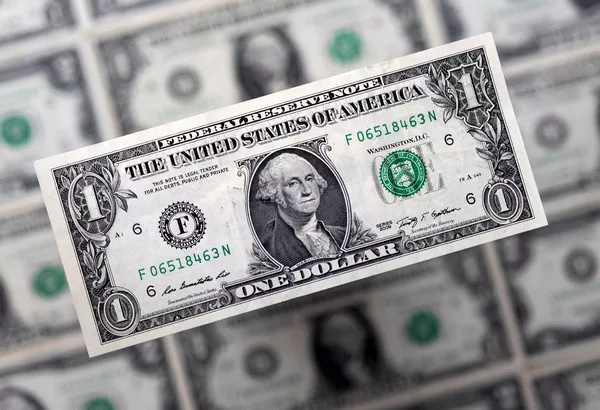The global financial landscape is intricately connected, and any significant disturbance to one of its cornerstones can send ripples throughout the entire system. The U.S. dollar, as the world’s primary reserve currency, plays a central role in international trade and finance. Consequently, understanding the potential impact of a dollar collapse on gold prices is of great importance. In this article, we will delve into the complex dynamics between the dollar and gold, exploring how a dollar collapse might influence the precious metal’s value.
The Dollar-Gold Relationship
Before examining the effects of a potential dollar collapse on gold prices, it’s crucial to establish the existing relationship between the two.
1. Historical Safe-Haven Status: Gold has traditionally been viewed as a safe-haven asset, particularly during times of economic uncertainty and currency devaluation. When confidence in fiat currencies wanes, investors often turn to gold as a store of value.
2. Inverse Correlation: Gold and the U.S. dollar typically exhibit an inverse correlation. When the dollar strengthens, gold prices tend to weaken, and vice versa. This relationship is driven by various factors, including the opportunity cost of holding gold (i.e., the foregone interest income when not holding interest-bearing assets).
3. Dollar as the Benchmark: The U.S. dollar serves as the benchmark currency for gold pricing in global markets. Gold prices are primarily denominated in dollars, making the dollar’s strength or weakness a crucial determinant of gold’s value.
Scenarios Leading to a Dollar Collapse
A dollar collapse can result from various scenarios, each with its own triggers and implications:
1. Hyperinflation: If the U.S. experiences hyperinflation due to excessive money printing, the dollar’s value could plummet rapidly, leading to a loss of confidence in the currency.
2. Sovereign Debt Crisis: A burgeoning national debt combined with unsustainable fiscal policies might lead to concerns about the U.S. government’s ability to meet its financial obligations, eroding trust in the dollar.
3. Global Reserve Currency Shift: A gradual shift away from the dollar as the world’s primary reserve currency, with other currencies or digital alternatives gaining prominence, could undermine the dollar’s status and value.
Impact on Gold Prices
A. Short-Term Effects
1. Flight to Safety: In the immediate aftermath of a dollar collapse or a sudden depreciation, investors may flock to safe-haven assets like gold, seeking refuge from the turmoil in currency markets. This increased demand for gold can drive up its price.
2. Speculative Movements: Traders and speculators may take advantage of heightened volatility in both the dollar and gold markets, leading to short-term price fluctuations.
3. Gold’s Purchasing Power: A weakened dollar can erode the purchasing power of the currency, making gold more attractive as a hedge against inflation. This can contribute to upward pressure on gold prices.
B. Medium-Term Effects
1. Currency Devaluation Concerns: As the dollar’s collapse becomes more apparent, concerns about currency devaluation may intensify. Investors and central banks may continue to accumulate gold to safeguard their wealth and diversify their reserves.
2. Central Bank Actions: Central banks may increase their gold holdings to bolster their own currency’s stability during a dollar crisis, contributing to a sustained rise in gold prices.
3. Supply and Demand Dynamics: Ongoing global economic uncertainty can lead to changes in supply and demand dynamics. Gold production and exploration may increase as miners respond to higher prices, but elevated demand may continue to outpace supply growth.
C. Long-Term Effects
1. New Global Monetary System: A dollar collapse could accelerate the transition to a new global monetary system, potentially involving a basket of currencies, digital currencies, or alternative assets as reserve assets. Gold may play a role in this new system, providing further support for its long-term value.
2. Economic Realignment: A significant shift in the global economic order may occur, with potential geopolitical consequences. Gold’s role in this evolving landscape would depend on various factors, including its perceived value and utility.
3. Inflationary Pressures: A sustained depreciation of the dollar could lead to prolonged inflationary pressures. Historically, gold has been a hedge against inflation, which could drive continued demand and support higher gold prices.
Factors to Consider
Several factors can influence the extent of gold price movements in response to a dollar collapse:
1. Market Sentiment: Investor sentiment and perception of the dollar’s decline play a critical role. If confidence in alternative currencies or assets is strong, the impact on gold prices may be more muted.
2. Government Policies: The actions of governments and central banks in response to a dollar collapse can significantly shape the financial landscape. Interventions, regulations, and monetary policies can all affect gold prices.
3. Global Economic Conditions: The broader economic environment, including factors such as trade tensions, geopolitical instability, and monetary policy decisions by other major economies, can interact with a dollar collapse to influence gold prices.
4. Speculative Activity: Speculative trading in the gold market can lead to short-term price swings that may not necessarily reflect fundamental shifts in supply and demand.
Conclusion
The relationship between the U.S. dollar and gold is multifaceted, with various factors influencing their dynamics. A dollar collapse, while not an everyday occurrence, can have significant implications for the precious metal’s value. In the short term, gold often acts as a safe haven during currency crises, leading to price increases. In the medium to long term, continued concerns about currency stability, inflation, and a potential reconfiguration of the global monetary system can sustain gold’s appeal as a store of value.
However, predicting the precise impact of a dollar collapse on gold prices remains challenging due to the complex interplay of factors involved. Investors and policymakers must carefully monitor global economic conditions, government policies, and market sentiment to navigate this intricate relationship effectively. Regardless of the specific scenarios that may unfold, gold’s role as a safe haven and store of value is likely to endure, making it a valuable asset to consider in a diversified investment portfolio.


